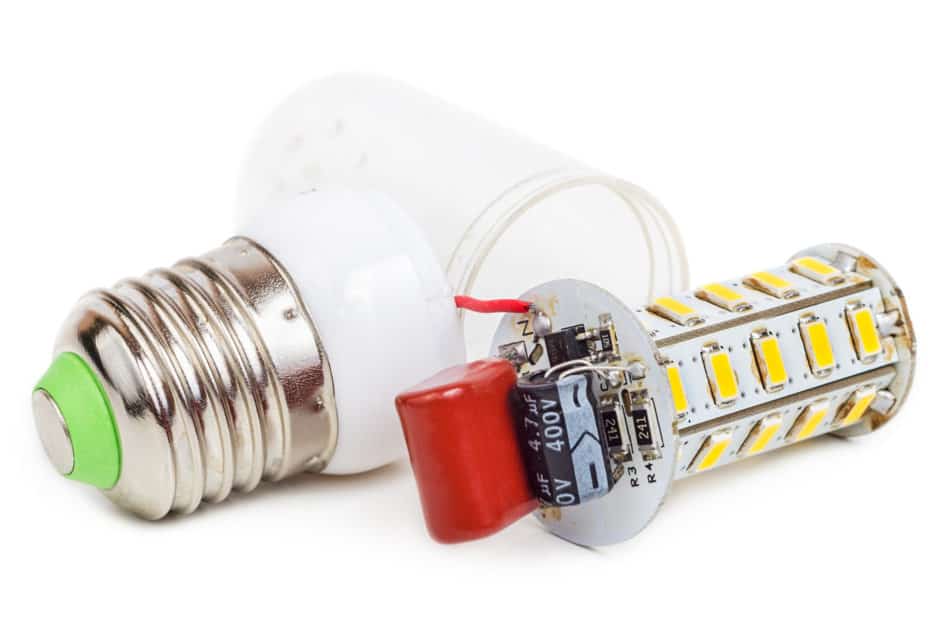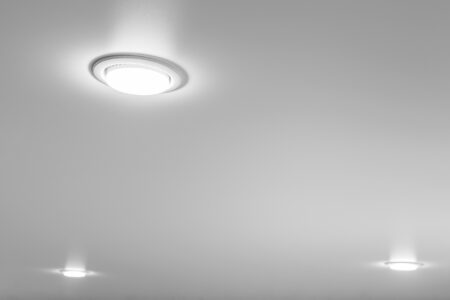Anyone who deals with the subject of LED lighting will often come across the term LED driver or the word constant current source. But what is an LED driver and what is its task? Why is a constant output current necessary? In this article you will learn everything about the definition, functionality and applications of LED drivers.
What is an LED driver?
If you have already dealt extensively with the topic of LED lighting and suitable lamps and luminaires, you certainly came across the term LED driver. Mostly the following terms appear in this context:
- LED driver
- Constant current source
- LED power supply
An LED driver is an electronic circuit that generates a constant output current from the supply voltage. This controls the LEDs integrated in the lamp. In electrical engineering, this circuit is often referred to as a constant current source. The term LED power supply actually describes a constant voltage source and is used here rather colloquially.
Driver, current source, power supply?
The individual terms are closely related on the one hand and are often used as synonyms in some areas. In specialist circles, the terms are differentiated more precisely.
In electrical engineering, an LED driver is either a driver circuit with individual components or a driver IC. This circuit is generally referred to as a constant current source. For operation, a separate power supply unit is required, which generates the supply voltage for the driver from the 120V mains supply.
In the consumer area, however, the term LED driver often refers to the entire unit consisting of driver circuit and power supply unit. A pure LED transformer for the operation of low voltage lamps is often referred to as a driver. This is technically not correct, because the actual driver is in the lamp, but the terms are often used here.
What is an LED driver necessary for?
Conventional 12V halogen lights only needed a simple transformer, which generated the 12V operating voltage from the 120V mains supply. LED lights are much more complex than the old lamps. Light emitting diodes are semiconductor components. The LED chips they contain have a current/voltage characteristic and must be operated at their correct operating point.
Otherwise a fluctuating brightness and a bad efficiency would be the result. Due to series scattering, however, the operating point at a simple voltage source cannot be precisely adjusted. This is only possible with a constant current source in the form of an LED driver.
Difference between driver and power supply
The two terms are often confused or used as synonyms. However, there is one big difference:
An LED driver is a constant current source.
An LED power supply is a constant voltage source.
How does an LED driver work?
Below you will find a short description of different driver types. This refers to constant current sources and not voltage sources, which are often mistakenly referred to as drivers. These are the most common variants:
- LED series resistor
- Linear drivers
- Clocked drivers
LED series resistor
With many LED lamps in the low-cost range, the LED driver sometimes only consists of a resistor. This is connected in series to the LED and limits the current flow to the previously calculated value. This LED driver variant is of course extremely inexpensive, but has some disadvantages.
On the one hand, the resistance literally burns up the limited energy. This energy is converted into heat in the resistor and released into the environment. Thus the advantages of the high efficiency of the LED are lost again. On the other hand, the LED also reacts directly to fluctuations in the supply voltage with fluctuations in brightness, as no active regulation takes place in this economy version.
Linear drivers
A linear LED driver converts a higher input voltage to the set operating current of the LED. Due to the voltage difference between the input and output, the linear regulator has a control range to readjust the output when the input voltage fluctuates. So there are no brightness fluctuations of the LED.
Linear drivers have the disadvantage that the voltage drop and operating current of the LED also results in a power loss. This energy is simply converted into heat and reduces the efficiency of the LED. The advantages include active control, simple circuit design and a low price.
Clocked drivers
A clocked LED driver works similar to a switching power supply. Due to a high switching frequency in the driver, the energy can be transferred from the input to the output with only minimal losses. Switched mode driver ICs are available with efficiencies well above 90%.
This allows the connected LED to be operated efficiently at its ideal operating point. The disadvantage of clocked drivers is that they require more circuitry for necessary interference suppression actions. This driver type is therefore primarily of interest for LED lamps with high wattages and is therefore one of the most expensive variants.
Are LED drivers dimmable?
The dimmability of LED lamps is technically a complex issue. LEDs cannot simply be dimmed by reducing the voltage. Pulse width modulation (PWM) is required for dimming LEDs. The supply voltage is switched on and off at a high switching frequency in relation to the desired brightness.
Basically there are dimmable versions of all described LED drivers. However, these must be explicitly marked as dimmable in order to be able to handle the fast switching process of the PWM.
Conclusion
An LED driver provides a constant operating current for an LED at a predetermined operating point. This ensures a high degree of efficiency and a long lifespan of the LED. In addition to various driver variants, you are now also familiar with the alternative terminology and the areas in which confusion often occurs.






